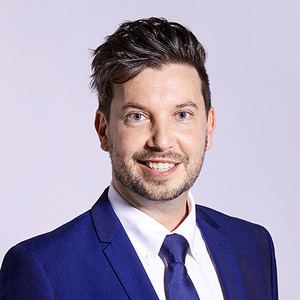Power List

Ben LaHood
Power List Profile
Cataract and Refractive Surgeon at Adelaide Eye and Laser Centre; Consultant Ophthalmologist at The Queen Elizabeth Hospital; Lecturer at University of Adelaide, Australia
Why did you decide to pursue ophthalmology/your subspecialty?
A year after graduating as a junior doctor in New Zealand, I was not enjoying my job and decided to take some time out. At Medical School, I had won the prize in ophthalmology and, from that department, Professor Gordon Sanderson contacted me out of the blue to ask what I was doing with my life. Upon hearing that I had quit medicine, he asked if I would be interested in spending some of my free time simply observing in the eye department of a small town. He was a smart man as it was a very welcoming environment where I was nurtured, began to be useful, and grew to love ophthalmology. Gordon sadly passed away before I graduated as a specialist but I think of him often and am thankful he helped me find my purpose in life.
Do you have any strong opinions with which the rest of the field tends to disagree?
I strongly believe that all cataract patients, whether in a public or private system, should be given the same access to “advanced technology” IOLs. It is immoral that a patient undergoing cataract surgery in a public hospital should be given a non-toric IOL simply because of an arbitrary cut-off value, when that same patient in a private clinic can be given a life of spectacle independence. The same argument is valid for using multifocal IOLs where many public hospital patients would benefit especially from this technology such as those with dementia, or other disabilities. These are exactly the people who we must make the most effort to remove the worries of losing or paying for reading glasses.
What would you like to see change in ophthalmology/your subspecialty over the next 10 years – and why?
I would like to see refractive surgery become a more popular and acceptable subspecialty where it is ok for a trainee to say they want to be a refractive surgeon. Many colleagues still see refractive surgery as being superficial and many trainees don’t feel comfortable to pursue a purely refractive fellowship. This view is beginning to change and it would be great if private insurance companies also acknowledged that laser refractive surgery was not simply cosmetic but a life changing treatment.
What is your prediction for where ophthalmology/your subspecialty will be 10 years from now?
I believe we have approached the asymptote of what is achievable in terms of refractive outcomes with current technology from cataract surgery. It is achievable for 95 percent of eyes to have minimal prediction error. I don’t expect the additional benefits to come from better formulas, IOL materials or surgical techniques. Instead, I predict that postoperative enhancement of outcomes will become increasingly simple and common. This will come in the forms of laser adjustable IOLs as well as methods to alter corneal power and shape without removing tissue.
Do you have any personal missions for the next 10 years?
I aim to continue to promote the use of toric IOLs to properly treat astigmatism. Over the past five years, I have been educating colleagues about toric IOLs to show that they can be used simply and effectively without a lot of fancy equipment and that it can be quite straightforward to manage complications. I want to see my research work help to improve toric IOL access for all patients globally.
